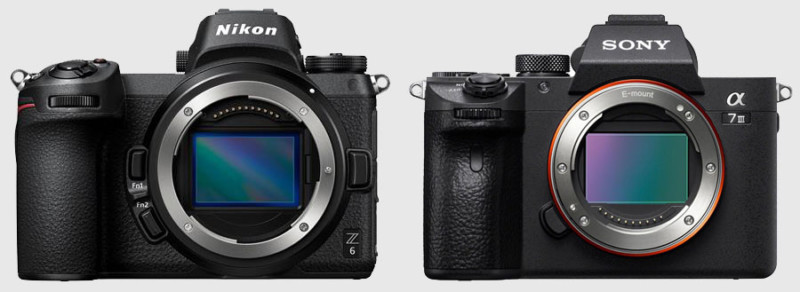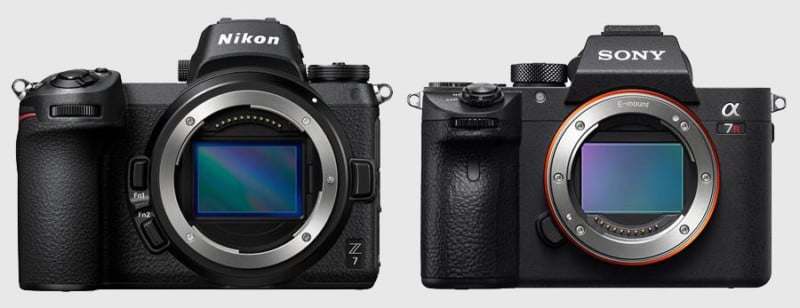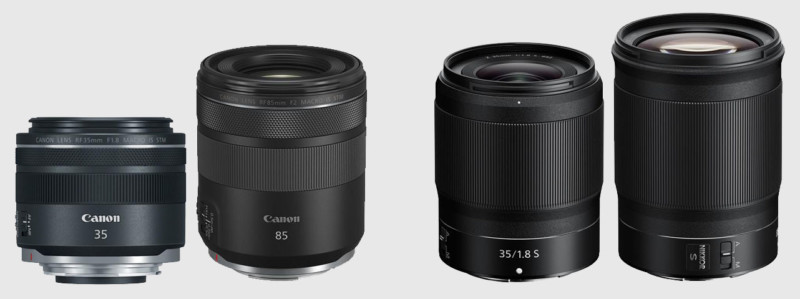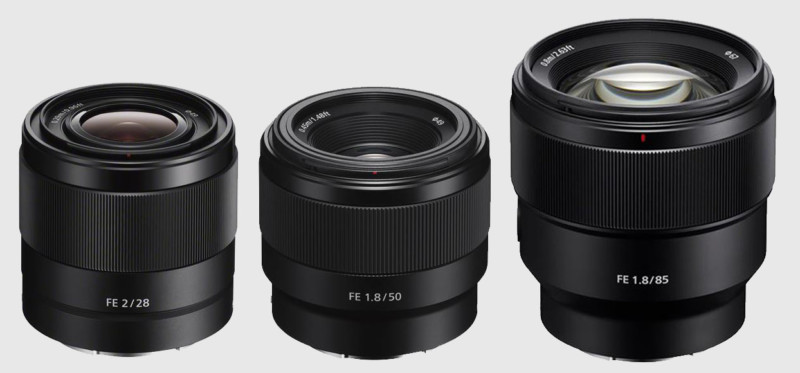![]()
On the 14th of October, Nikon is set to announce its latest cameras. These are due to be updates to the Z 7 and Z 6 mirrorless cameras. There are a lot of expectations, but the biggest expected update for these cameras is… the second card slot.
The Uphill Battle
Public sentiment hasn’t been in Nikon’s favor for some time now. Currently, the company sits in fourth place in the mirrorless division, and it doesn’t look like it’s gaining any significant ground. Companies like Sony and Canon have cemented their positions already and unfortunately, Nikon just doesn’t have any seriously compelling offerings. In some sense, it feels as though Nikon is constantly playing catch up with the rest of the market.
The Nikon Z 6, for example, released back in November 2018, is an alternative to the Sony a7 III; a camera that was released a whole seven months before it. The problem is that the Z 6 is essentially just a copy and paste version of the Sony. Aside from a few knick-knacks, the features are pretty much the same.

A similar comparison could be made between the Z 7 and the Sony a7R III, which is a camera that was superseded more than a year ago. It’s no surprise that Nikon has been slipping in the market because it seems to be playing catch-up with its current main competitor.

This is one of the key reasons why it’s going to so difficult for Nikon to fight back, especially against Sony. The hand-me-down strategy they have with Sony sensors is inevitably going to keep them a few steps behind. In essence, Nikon is trying to compete against Sony with both arms tied.
Admittedly, I am oversimplifying the Sony and Nikon relationship, however, I doubt Nikon will be producing cameras with next-generation sensors before Sony does.
Even the rumored Z 9 camera has leaked specifications that are essentially the same as the EOS R5, except that it’s already late.
Lenses
The first few lenses that Nikon announced for its mirrorless system were pretty boring. Sure, Nikon announced the 58mm f/0.95 Noct too, but this lens is nothing more than an impractical, bragging rights badge of honor. I doubt very many people will be moving over to the Nikon system purely because of the Noct. The main lenses that Nikon initially announced were overpriced f/1.8 lenses.

These f/1.8 lenses were priced close to what some f/1.4 lenses cost, which creates several problems. First, it creates a steep barrier for entry. Most people like to shoot with inexpensive f/1.8 prime lenses because they generally offer enough quality. This also means that any potential f/1.4 lenses will probably cost far too much. It just doesn’t create an attractive ecosystem.
Consider what Canon did with its f/1.8 and f/2.0 lenses. Both the 35mm and 85mm are priced reasonably and offer brilliant quality. They are relatively sharp wide open and offer macro features too. Weighing up the systems, Canon looks like the better option.

Sony, too, has a range of inexpensive lenses available. The 28mm, 50mm, and 85mm lenses, all of which offer great quality results, without a ridiculous price point.

Considering how similar the cameras are between Nikon and Sony, it’s the lenses that really make the difference and Sony has better options available.
Autofocus
Nikon has come a long way since its DSLR days when it comes to focusing using the image sensor. Both the Z 6 and Z 7 have pretty good autofocus features. Unfortunately, it’s not competitive enough.
Canon has been developing its Dual Pixel AF technology for almost a decade. Cameras like the 70D, which was released all the way back in 2013, came with this feature. For video, there still isn’t anything that really beats this AF system. This gave Canon a great deal of experience in this department and it’s something that has really carried Canon forward.
The latest cameras from Canon have incredible AF features and this is all with DPAF.
Sony has also been working hard on developing its AF technology and has come a long way since the original a7 camera. Currently, Sony might have the best overall AF system for mirrorless cameras.
Unfortunately, Nikon is still noticeably behind in this area. It’s pretty difficult to recommend Nikon over Canon and Sony when the AF system isn’t up to par.
Playing it Too Safe?
Nikon seriously needs to update its AF system and that is, unfortunately, easier said than done. I’m hoping that the latest cameras due to be announced this month will have a much better AF system. If it’s on par with Canon and Sony, then that by itself will make a huge difference.
The AF system needs to be effective for both video and photography because these are all hybrid cameras now.
For lenses, Nikon really needs to consider producing a line of inexpensive f/2 lenses. The f/1.8 slot has already been taken with the current pricey options; however, Nikon could create a low price entry point with f/2 primes. I also think that Nikon should completely skip the f/1.4 line of lenses and jump straight to f/1.2 primes instead. That way there is a greater gap between the inexpensive options and the “premium” lenses.
The key thing that Nikon needs to do is to not play it so safe. We already have Sony producing all of the “standard” lenses and the somewhat reserved mentality to new camera systems. Sony is already the “safe” manufacturer, whereas Canon is the company producing crazy 8k cameras, drop-in filter adapters, and f/2 zoom lenses. Canon has also produced two super-tele f/11 prime lenses, which shows that it isn’t afraid to take risks. Aside from an ornamental mantelpiece f/0.95 lens, Nikon hasn’t taken any real risks.
Between all of the manufacturers, Nikon is playing far too safe and due to this, it just doesn’t have a significant enough unique selling proposition (USP).
Accepting the Niche
It may be an idea for Nikon to accept a smaller portion of the market and scale back its organization to match. Directly competing with Sony and Canon may just not work, so Nikon needs to come at this problem from a different angle. I think Nikon should start producing more niche type products, specifically for individual photography segments.
Nikon could potentially approach lens design similar to how Venus Optics does. Laowa lenses are pretty odd in comparison to many regular lenses and that’s what makes them utterly brilliant.

What if Nikon produced a full-frame version of a technical camera all with tilt and shift capabilities built-in? The lens mount in the new Z system is huge and if Nikon coupled it with a few large image circle lenses, I think that could work pretty well. Add 16-bit raw files to it and I think that would be a pretty incredible system.
I appreciate these are some outlandish suggestions, but the point is that we don’t need another company offering what Sony already is. Nikon needs to acquire a new identity.
Final Thoughts
I appreciate that many people may not like the comparison I’m making between Nikon and Sony. Some of you may want to point out certain differences between both mirrorless systems, but ultimately, they’re pretty interchangeable… except that Sony is doing it better.
This is why I think Nikon really needs to reevaluate its strategy and adjust its identity a little.
Nikon has done so much for the industry and it would be a dire shame to see this company fail. I’m hoping that I’m wrong and this dip in the market for Nikon is just a blip. Unfortunately, it doesn’t look that way, and I really hope that Nikon can find a way through this.
About the author: Usman Dawood is the lead photographer of Sonder Creative, an architectural and interior photography company. The opinions expressed in this article are solely those of the author. You can find more of Dawood’s work on his website, Instagram, and YouTube.
Author: Usman Dawood
Source: Petapixel



